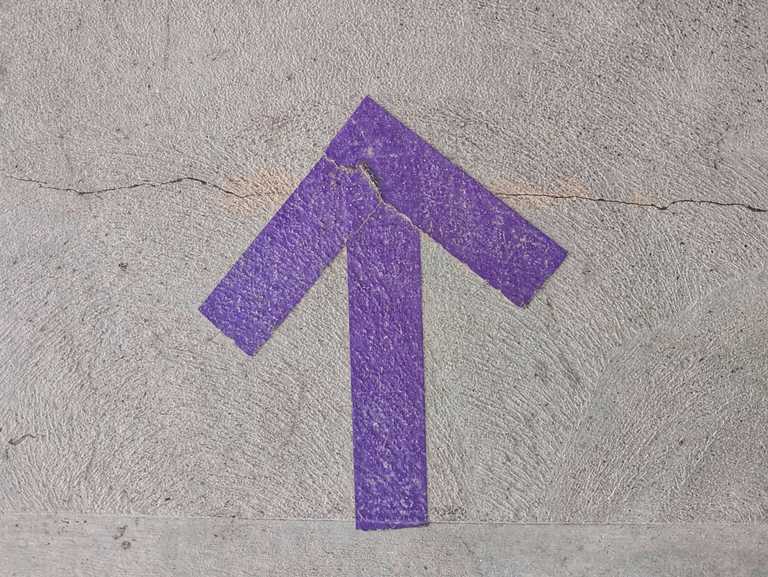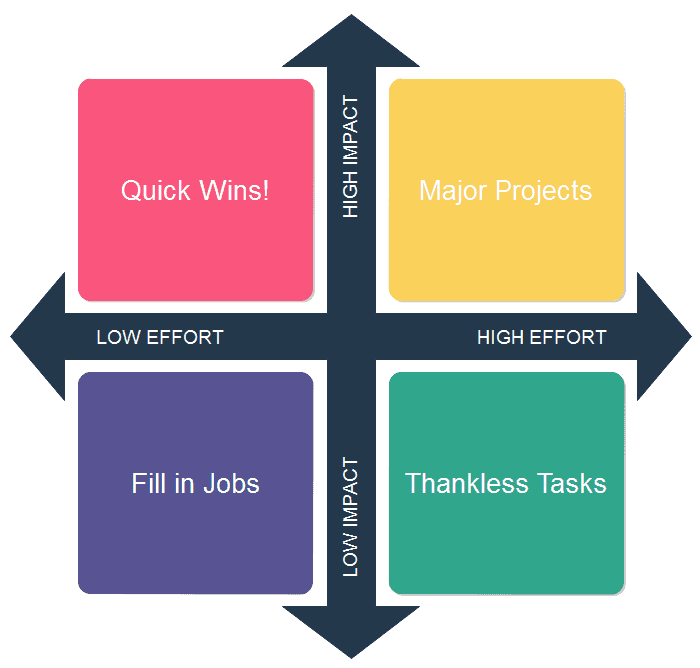7 Tips to Better Prioritize Product Backlog Items in Scrum
Product backlog prioritization is important to have a structured to-do list in which items are arranged with the value they offer to the product. Find out more on the best tips to prioritize backlog items in this article.

In Scrum, the product backlog is a central list that includes all the product-related items that the Scrum team is going to focus on and complete in the next sprints. However, the product backlog is not a serial to-do list because different backlog items have different roles in the success of the product. Therefore, prioritization of the product backlog is a common practice in Scrum in order to have a structured and effective backlog list. Therefore, this article intends to discuss the prioritization of the product backlog closely and presents some important tips for efficient prioritization.
Why is Product Backlog Prioritization Important?
In many cases, teams just keep putting every idea or request in the backlog list. When this happens, the backlog becomes significantly large, making it difficult to review and organize items for upcoming sprints.
Moreover, there are often some items in the backlog that are dependent on other items. So, the product backlog should be such that items are well-arranged based on their priority level. That's why it is important to prioritize the product backlog. When a backlog is prioritized, it becomes an organized and structured to-do list. This way, teams can easily keep the top-priority items, plan the sprint, and start working.
Best Product Backlog Prioritization Techniques
Before we jump into discussing the tips to better prioritize product backlog items, let's first discuss the commonly used techniques to prioritize the product backlog. Below are the 4 product backlog prioritization techniques worth knowing:
1. Impact/Effort Matrix
The impact/effort matrix involves two axes, i.e., the impact axis and the effort axis. In these axes, the backlog items are placed based on their effort demands and impact on the product.

Impact/Effort Matrix. Source EdrawMax
This technique can be done on the whiteboard or using sticky notes, while multiple members can participate in this technique.
2. MoSCoW Method
MoSCoW is another popular prioritization technique in which backlog items are distributed into four priority categories, as follows:
- Must-Have: It includes backlog items that must be completed for the product release.
- Should-Have: It includes backlog items that are important but are not a "must" for the successful release.
- Could-Have: It includes backlog items that are desirable but can be left out without causing any impact on the product.
- Won't-Have: It includes backlog items that are irrelevant and left out at this time.
This way, all the backlog items are divided into four priority categories, making it easy to execute the backlog.
3. Stack Ranking
This is a simple prioritization technique in which backlog items are placed in a numeric-based priority order. The top item with the value "one" is the highest-priority item, followed by the number two, three, four, and so on, until all backlog items are prioritized.
The benefit of stack ranking is that it gives each item one unique value, making it easy to identify high-priority items. Moreover, it also makes sprint planning a lot easier.
4. Kano Model
The Kano Model technique is similar to the MoSCoW technique in which the backlog items are also categorized. However, here the categorization is based on the requirements and expectations of the customers. So, the three categories in the Kano Model are:
- Basic Features: This category includes the main features of the product that the customers must expect from the product. Otherwise, they won't buy the product.
- Excitement Features: This category includes backlog items/features that customers will be happy to see in the product but won't be disappointed if they are not included.
- Performance Features: This category includes backlog items/features that can increase customer satisfaction.
Kano Model. Source: ProductPlan
The Kano Model is best for teams with a limited budget and time and who want to maximize customer satisfaction through the combination of basic, excitement, and performance features.
7 Tips to Better Prioritize Product Backlog Items
The backlog prioritization methods discussed above are commonly used by a lot of teams to easily prioritize backlog items. However, there are still chances of inaccurate prioritization if the techniques are used incorrectly. Therefore, below are the seven tips that can help your team to have more accurate backlog prioritization even if you are using any of the above prioritization techniques:
1. Involve the Development Team
There is confusion regarding product backlog prioritization that who should prioritize it. The general concept is that the Product Owner creates and prioritizes the backlog. Afterward, the development team can estimate the efforts of the backlog during an estimation meeting and can re-prioritize the backlog. This strategy seems good and is followed by many Scrum teams.
However, it is believed that the involvement of the development team during the first phase of backlog prioritization can provide more fruitful results. It is because the development team is the one who is going to work on the project, so the team better knows the technicalities and dependencies. Therefore, if the development team and the Product Owner prioritize the backlog items together, then it can lead to a more accurate prioritized list. Afterward, the team can proceed with effort estimations and sprint planning.
2. Set a Category System to Organize Backlog Items
To prioritize the backlog, the best strategy is to divide the backlog items into multiple categories. You can pick the backlog technique that includes a category-based prioritization, or you can create your own category system. For example, the team can divide the backlog items into high-priority, second-level priority, low-priority, to be refined, not prioritized, etc.
Once the backlog items are prioritized in categories, it becomes a lot easier to look at the backlog and pick a few items for the upcoming sprint.
3. Make Top Items of Backlog present Next Sprint
While prioritizing the backlog, it is recommended to make the top items present next sprint. Whether the team is prioritizing in numeric order or setting categories, the top-most items should always present the items for the next sprint.
There are multiple benefits of this strategy. The main one is time efficiency, as the team won't have to again spend time finalizing the items for the sprint. Now they can easily pick the top items of the backlog and initiate sprint planning. In addition, this strategy also helps stakeholders and the team to have a clear glimpse of the project structure, which helps team members to show more commitment towards achieving end goals.
4. Keep the Length of the Backlog Confined
The length of the backlog is very critical for the accurate prioritization of backlog items. When the length of the backlog is large, it means the team has to spend more time prioritizing the backlog. Moreover, a large length backlog often contains many items that are not necessary for the product's success.
The target should be to keep the length of the backlog confined. Some say that the length of the backlog should be such that it gets completed in 2-4 sprints. The benefit of the confined backlog is that it makes prioritization a lot easier and more efficient. The team can spend time understanding and prioritizing backlog items properly without getting overwhelmed. In fact, after a few sprints, the team can even add more backlog items by conducting a backlog grooming session and re-prioritizing the backlog.
5. Create a Separate List for Ideas
Sometimes it is challenging for the Product Owner to keep the length of the backlog confined. If that's the case, then the Product Owner, in collaboration with the development team, can create a separate list where those ideas or requests are placed that are not necessary at the moment.
This way, the team can have two backlog lists. The first one they will prioritize, while the second one will be considered during backlog grooming meetings. Overall, the target should be to keep the length of the backlog confined.
6. Assign Story Points
Another tip to uplift the backlog prioritization outcome is to assign story points to the items. Once the team has prioritized the backlog, it is recommended to estimate the efforts and assign story points. Story points are the units of measurement that are used for estimating the efforts required to accomplish the goals of the user story or backlog item.
There are multiple estimation techniques the teams can pick, such as Planning Poker, Async Poker, Dot Voting, T-Shirt Sizing, Affinity Estimation, etc. Estimating not just helps to know the efforts to complete the backlog item, but it also helps to identify hidden challenges or dependencies beforehand. This way, the team becomes more prepared, and sprints become more efficient.
7. Refine the Backlog Regularly and Re-prioritize
In the above tips, we have mentioned about "backlog grooming" a couple of times. A backlog grooming or backlog refinement is a session in which the team discusses, reviews, and prioritizes backlog items. The main goal of backlog grooming is to keep the backlog up-to-date so that the next sprints are more effective.
When a team has completed a few sprints, it might realize that a few backlog items need some more time or are dependent on a few other tasks. Similarly, there might be a second backlog list of ideas/requests that the team intends to add to the main backlog. So, backlog grooming is a perfect session for teams to refine the backlog and re-prioritize. Therefore, conduct refinement meetings regularly to always have an up-to-date prioritized backlog list.
Wrapping Up
Product backlog prioritization is a must for Scrum teams to have organized sprints and quality releases. Although prioritization looks simple, it can easily lead to an inaccurate prioritized list and cause troubles later on in the development phase if done wrongly. So, the recommended approach is to pick the prioritization technique that best suits your business model and follow the above tips to have a perfect prioritized list.


